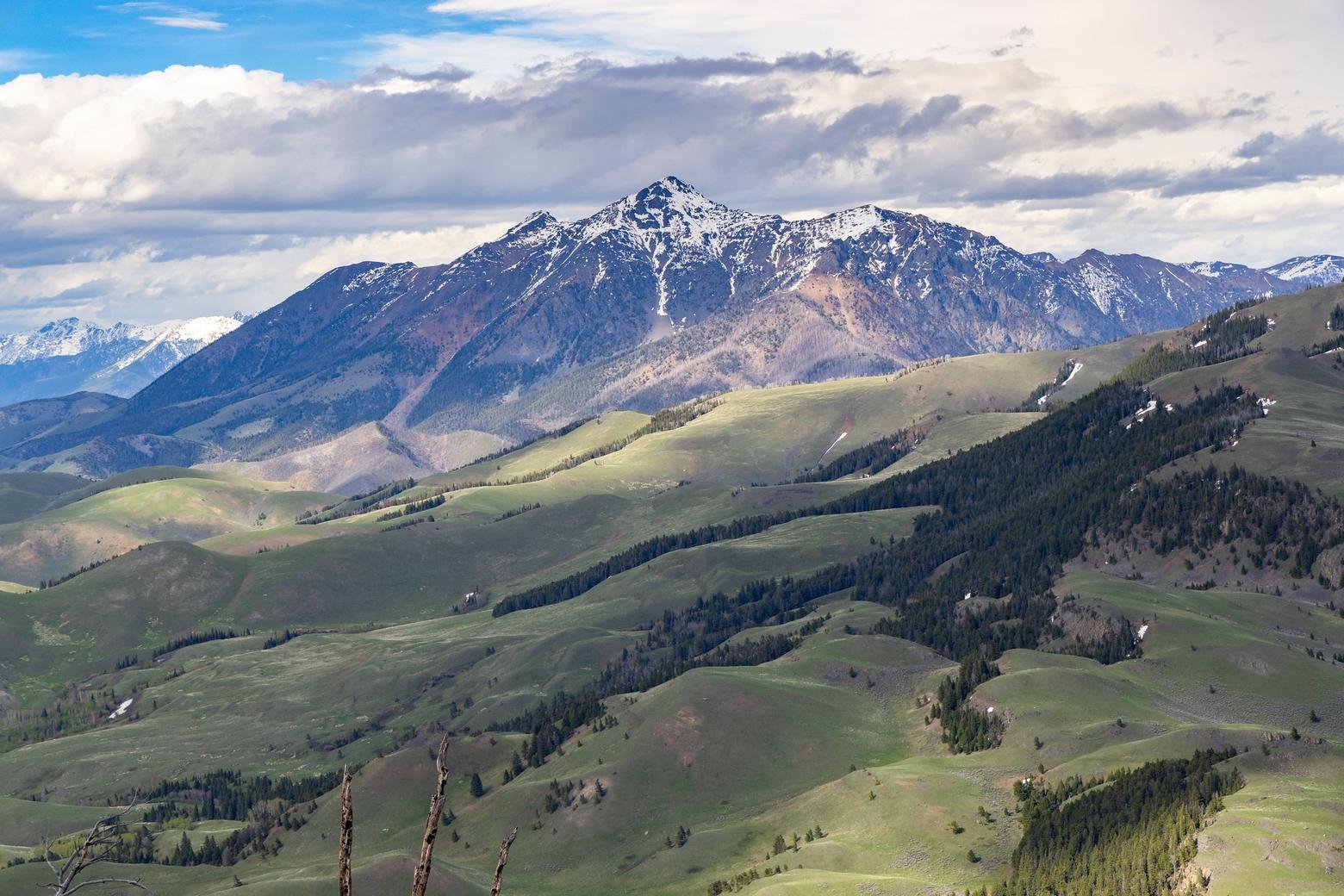Back to StoriesWilderness: An Update on the Custer Gallatin
April 25, 2024
Wilderness: An Update on the Custer GallatinConsidering the changing climate and recent proposals, four heavy hitters weigh in on the future of Wilderness, wildlife and the Custer Gallatin National Forest
EDITOR'S NOTE: Mike Clark previously served as a board member at Mountain Journal and also as its interim executive director.
By Dorothy Bradley, Mike Clark, Jeanne-Marie Souvigney,
John Varley
The issue of wilderness designation in the Custer
Gallatin National Forest has been percolating for several years following the
proposal of a group called the Gallatin Forest Partnership. The proposal is
being replayed this spring.
Many of us found that the GFP proposal fell short of
projected needs in numerous ways. One is that while it proposed to set aside
vast acreages for a variety of recreational activities, it did not recommend
sufficient wilderness acreage to ensure the survival and biodiversity of present,
numerous species of wildlife, some of which are endangered. More seriously, it
failed to acknowledge and project the realities of climate change that are now
upon us.
Some of us personally knew our visionary leaders who,
way back in 1977, sought to protect substantial chunks of wilderness in this
glorious stretch of country. With some great successes, but short of time, they
secured protection for a number of “Wilderness Study Areas,” trusting our
generation to carry forward worthy proposals for permanent designations that
would honor their vision of maximum acreage and maximum protection. This, to us
and so many, is right up there with other commandments inspiring us to rise to
the occasion. We are likely the last generation that will have the opportunity
to provide maximum acreage and maximum protection, and the first generation
that must witness and live with many of the grim realities of climate change.
When considering land-use tools to protect the values
and dreams of our forbearers, it is helpful to note that we are not just bound
to wilderness designations. This past year we have heard discussions of two
alternatives for the Custer Gallatin National Forest: National Monument and
National Park status. A “Greater Yellowstone National Park” could stitch the
two ecosystems together with little disruption, and reinforce protection for
wilderness lands. Park
rules are already set and the results of park management speak for themselves.
The wildlife, fisheries and ecosystem come first, and are suitably protected.
Millions of visitors travel through Yellowstone every year, but are
concentrated and not overwhelmingly disruptive. Bicycles, horses, snowmobilers
and hikers all have decent access while true solitude is protected for
posterity.
We are likely the last generation that will have the opportunity to provide maximum acreage and maximum protection, and the first generation that must witness and live with many of the grim realities of climate change.
Most important in today’s consideration of the future
of this glorious ecosystem is the aspect of climate change. Scientists issued a
“code red” warning about reaching the so-called “tipping point” three years
ago. But business continued as usual: carbon emissions continue to rise and the
planet is hotter than any time in history. This month scientists observe that
we are now in “uncharted territory,” with even massive shifting of ocean
currents being a chilling possibility. Protected landscapes like wilderness areas are
essential to mitigating the impacts of climate change. Wilderness and Wilderness
Study Areas are critical habitats for understanding landscape vulnerabilities
and potential resilience, and offer greater opportunity for maintaining
biodiversity and providing for adaptation and mitigation, including allowing
population migration to new areas. We cannot lose them and should not be
willing to release any of them, but rather should be trying to protect them all.
If we remain powerless to turn this climate ship
around, we at least have the power—and the obligation—to protect our still-wild
landscape as best we can, for as long as we can, as responsibly as we can. Let
this be our calling.
However, and hopefully
for all interested parties: we believe our first obligation this 2024 is to
focus on elections, the outcomes of which are critical to anything visionary
happening in 2025.
Dorothy
Bradley, former Montana State Representative
Mike
Clark, retired Conservation Activist, frmr Interim Executive Director,
Mountain Journal
Jeanne-Marie
Souvigney, Conservation Policy Advisor
John
Varley, retired Chief Scientist, Yellowstone National Park
Related Stories
December 6, 2023
Outrage in Wyoming Erupts Over Public-Land Auction
A pristine piece of public land within Grand Teton National Park is on the auction block. It could go to the...
May 14, 2024
Wolf Whacking Must Go
On the
heels of a wolf that was tortured and killed in Wyoming, Mountain Journal
columnist Franz Camenzind says laws need to change.
...
March 7, 2021
Backward Thinking Targets Bears and Wolves
Op-ed: Chris Servheen, longtime national head of grizzly recovery in Lower 48, says Montana, Idaho are degenerating into anti-predator hysteria.


